

Biodiversity
Action
Plan
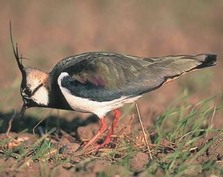
Lapwing has a slow, flappy flight of flickering black and white and ‘pee-wit’ call; in spring, males display in a tumbling flight.
It breeds and winters in Barnsley; drainage, intensive farming and loss of spring sown crops, has reduced farmland numbers. It is now found in the Dearne Valley wetlands and upland pastures.
Lapwing feed on invertebrates including worms and larvae found in pasture and wetlands.
Conservation includes:
- Maintaining open wet grassland with short grass for nesting and tussocks for cover
- Creating or retaining muddy areas and pools for feeding
- Providing ‘Lapwing plots’ within crops
- Anti-predation measures
Associated Habitats
Floodplain Grazing Marsh
Neutral or Acid Grassland
Rush Pasture
Arable fields with ‘Lapwing plots’
Lapwing nest in open wet grass-lands with a short sward, tussocks for cover, and pools and muddy areas for feeding. They avoid trees and hedges.
They also nest in spring-sown crops and in crops with a fallow ‘Lapwing Plot’.
They have one brood a year from late March to early June. Too early mowing or harvesting destroys nests; overstocking with cattle can lead to nests being trampled.
Lapwing
Resident breeding bird
UKBAP 2007 Priority Species
NERC Section 41 Species of Principal Importance
BoCC5 Red List [IUCN2 VU]
Yellowhammer, often seen perched on top of a bush, has bright yellow features and a notable song.
A widespread fairly common, resident breeding bird in Barnsley, it is found mainly in the lowland areas with smaller numbers towards the moorland.
Adult Yellowhammer adults feed almost exclusively on grass and cereal seeds.
Conservation includes:
- Maintaining short, thick hedges and ditches and wide margins.
- Reducing spraying
- Maintaining grassy and flower-rich margins for invertebrates.
- Ensuring at least one good seed food source in winter.
Associated Habitats
Hedgerows
Arable field margins
Neutral or Acid Grassland
Open mosaic habitat on previously developed land.
Yellowhammer nest close to the ground within thick hedges, where there is a wide uncut margin or ditch.
The female builds a cup-shaped nest from grass and moss, laying between two and six eggs
The Yellowhammer’s late nests mean that hedge trimming should only take place after August.
The chicks re largely dependent on invertebrates for food.
Yellowhammer
Resident breeding bird
UKBAP 2007 Priority Species
NERC Section 41 Species of Principal Importance
BoCC5 Red List
Tree Sparrow, distinguished by its slightly smaller size and its chestnut crown from the House Sparrow, is a localised bird of farmland and hedgerows,
There are small populations and colonies of Tree Sparrow in rural areas of Barnsley. Its numbers have fluctuated but recently at a more alarming rate.
Its decline is due to changes in agricultural practice and loss of available nest sites.
Conservation includes:
- Maintaining their habitat and nesting features
- Providing nest boxes in suitable locations
- Providing cover crops and stubble for winter feeding
- Reducing insecticide and herbicide spraying
Associated Habitats
Hedgerows and field margins
Verges with ample seeds
Adult Tree Sparrows mainly feed on seeds from set-aside, crops, stubbles and field margins.
They nest in holes and cavities in old buildings and trees, some-times in dense bushes. They will also use nest boxes.
They have 2 to 3 broods from April to August - no hedgerow trimming in this period.
Chicks are fed on insects from a wide range of habitats including hedges, crops and weed areas.
Tree Sparrow
Resident breeding bird.
UKBAP 2007 Priority Species.
NERC Section 41 Species of Principal Importance,
BoCC5 Red List [IUCN2 VU]
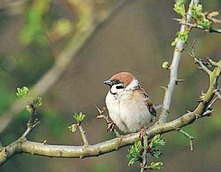
Skylark, with its ascending and prolonged song flight, is a notable bird of open agricultural and grassy areas.
Skylark continue to breed throughout Barnsley where their habitat remains and are absent from only the built-up areas.
Adult skylark feed on the seeds of crops and weeds in winter and on insects in summer as well as the chicks .
Conservation includes:
- Maintaining their habitat and nesting features
- Providing cover crops and stubble for winter feeding
- Reducing insecticide and herbicide spraying
- Protect nesting sites
Associated Habitats
Floodplain Grazing Marsh
Neutral or Acid Grassland
Rush Pasture
Previously developed land.
Skylark nest on the ground in vegetation 20-50 cm high well away from trees and hedges. They need the vegetation to allow easy access.
They have 2 to 3 broods from April to August.
Autumn and Winter sown crops grow too tall and dense by spring and grass silage is cut too frequently to allow successful breeding.
Skylark
Resident breeding bird.
UKBAP 2007 Priority Species.
NERC Section 41 Species of Principal Importance.
BoCC5 Red List
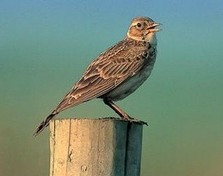
Grey Partridge has a distinctive orange face and grey breast and belly. It flies with whirring wings and occasional glides, showing a chestnut tail.
Having declined in numbers, Grey Partridge,is thinly distributed on lowland farmland, with some found around former spoil heaps, in the east of Barnsley.
Adults feed on seeds and shoots throughout the year on set-aside, stubble, weeds and crop margins.
Conservation includes:
- Maintaining wide grassy field margins and hedge bottoms
- Retaining winter stubbles for foraging
- Eliminating insecticide and herbicide spraying to promote insect food for chicks
- Providing cover to protect from predators
Associated Habitats
Hedgerows and field margins
Neutral or Acid Grassland
Previously developed land.
Grey Partridge nest on the ground in hedge bottoms, grassy field margins, nettle beds and other cover with dead tussocky grass often giving cover.
Grey Partridge have one large brood between April and June but their nest is vulnerable to predation, flooding and indeed early mowing.
Chicks need a diet of insects, especially caterpillars, bugs, ants and aphids mainly from crop margins and weed areas.
Grey Partridge
Resident breeding bird
UKBAP 2007 Priority Species
NERC Section 41 Species of Principal Importance
BoCC5 Red List [IUCN2 VU]

Linnet, a small slim finch with an undulating flight, usually twittering as it flies. Males are marked with red foreheads and breasts, females much browner.
Encountered in the winter months in large flocks of up to 500 birds in Barnsley.
The Linnet has declined in Barnsley and is thinly distributed as breeding bird. mainly where farming is less intensive.
Conservation includes:
- Providing a mix of crops, un-cut areas, stubble or seed-rich wild bird cover crops
- Creating and retaining thick, thorny nesting cover in scrub, hedges,, gorse, bramble areas
- Reducing insecticide and herbicide spraying
Local Priority Habitats
Hedgerows
Arable field margins
Lowland heathland
Linnet feed on small seeds throughout the year often from weedy areas.
Linnet nest in thick thorny cover in hedgerows and gorse patches. often in groups.
They need lots of seeds throughout the year and thick hedgerows and scrub for nesting.
Linnet
Resident breeding bird
UKBAP 2007 Priority Species
NERC Section 41 Species of Principal Importance
BoCC5 Red List
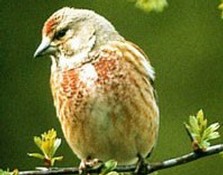
Yellow Wagtail, a small, graceful, yellow and green bird, has the typical wagging tail and slender black legs. It spends much time walking or running on the ground.
Yellow Wagtails favour damp meadows and pastures, grazing marshes and, increasingly, arable fields.
Conservation includes:
- Maintain damp grassland and areas near arable crops.
- Reduce insecticide and herbicide spraying
- Manage grassland with low-inputs to boost insect food.
Local Priority Habitats
Arable fields / field margins
Floodplain Grazing Marsh
Neutral or Acid Grassland
In Barnsley the Yellow Wagtail has declined considerably in older wetlands and now favours crops to the east of the area.
Adult Yellow Wagtails and their chicks feed on small insects, including flies and beetles.
Yellow Wagtail nest on the ground, often in crops in a hollow or sheltered by a clod of earth.
Yellow Wagtail
UKBAP 2007 Priority Species
NERC Section 41 Species of Principal Importance
BoCC5 Red List [IUCN2 NT]

Seven Farmland Bird Local Priority Species.
As well as the seven farmland bird priority species described here, information
on other farmland birds can be found via the links at the bottom of this page.
As well as the seven farmland bird priority species described above, information on Barn Owl and Kestrel can be found on the Predator page, Other birds also utilise farmland for nesting and in particular foraging.
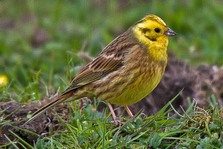
Continued …